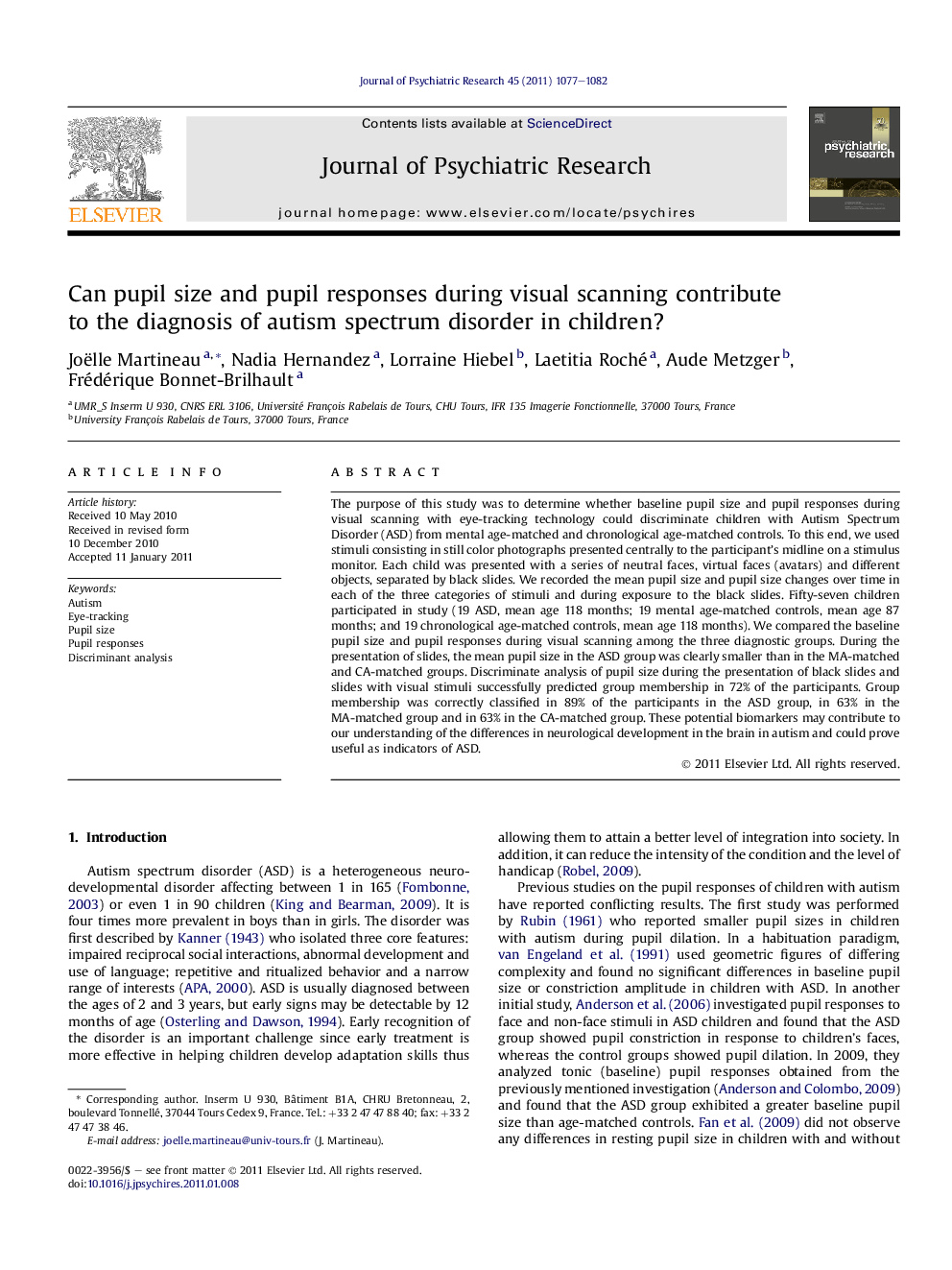| Article ID | Journal | Published Year | Pages | File Type |
|---|---|---|---|---|
| 10302608 | Journal of Psychiatric Research | 2011 | 6 Pages |
Abstract
The purpose of this study was to determine whether baseline pupil size and pupil responses during visual scanning with eye-tracking technology could discriminate children with Autism Spectrum Disorder (ASD) from mental age-matched and chronological age-matched controls. To this end, we used stimuli consisting in still color photographs presented centrally to the participant's midline on a stimulus monitor. Each child was presented with a series of neutral faces, virtual faces (avatars) and different objects, separated by black slides. We recorded the mean pupil size and pupil size changes over time in each of the three categories of stimuli and during exposure to the black slides. Fifty-seven children participated in study (19 ASD, mean age 118 months; 19 mental age-matched controls, mean age 87 months; and 19 chronological age-matched controls, mean age 118 months). We compared the baseline pupil size and pupil responses during visual scanning among the three diagnostic groups. During the presentation of slides, the mean pupil size in the ASD group was clearly smaller than in the MA-matched and CA-matched groups. Discriminate analysis of pupil size during the presentation of black slides and slides with visual stimuli successfully predicted group membership in 72% of the participants. Group membership was correctly classified in 89% of the participants in the ASD group, in 63% in the MA-matched group and in 63% in the CA-matched group. These potential biomarkers may contribute to our understanding of the differences in neurological development in the brain in autism and could prove useful as indicators of ASD.
Related Topics
Life Sciences
Neuroscience
Biological Psychiatry
Authors
Joëlle Martineau, Nadia Hernandez, Lorraine Hiebel, Laetitia Roché, Aude Metzger, Frédérique Bonnet-Brilhault,
